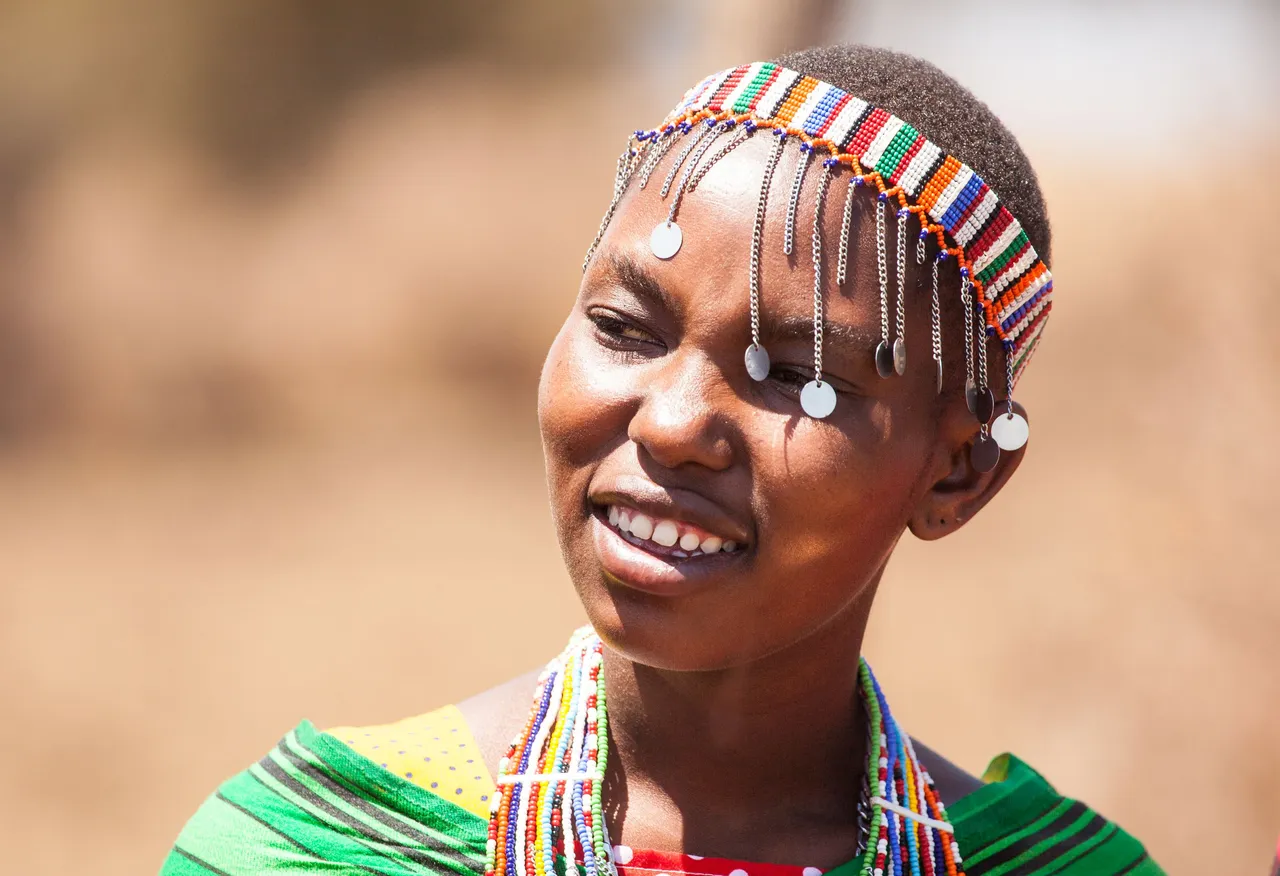
A young Maasai girl, dressed in intricate beadwork.
I firmly believe that you can't come to Africa and not be totally blown away by the kindness of the people. Everyone we have met has been humble, willing to engage in conversation, and so hospitable. You will meet all kinds of local people working the different jobs on safari and in the lodges. But something that is a must-do when on safari, is to go to a local village, and get a better feel for what life is like.
Right now we are in Amboseli National Park which is in the middle of Masai land. The Maasai people are part of the Nilotic ethnic group, believed to have migrated from the Nile Valley region in present-day Sudan and South Sudan between the 15th and 17th centuries. As they moved southward, the Maasai settled in what is now Kenya and northern Tanzania, displacing other groups such as the Kikuyu and farming communities, and establishing their territory on the vast savannahs. This migration allowed them to become one of the most dominant pastoralist communities in the region.
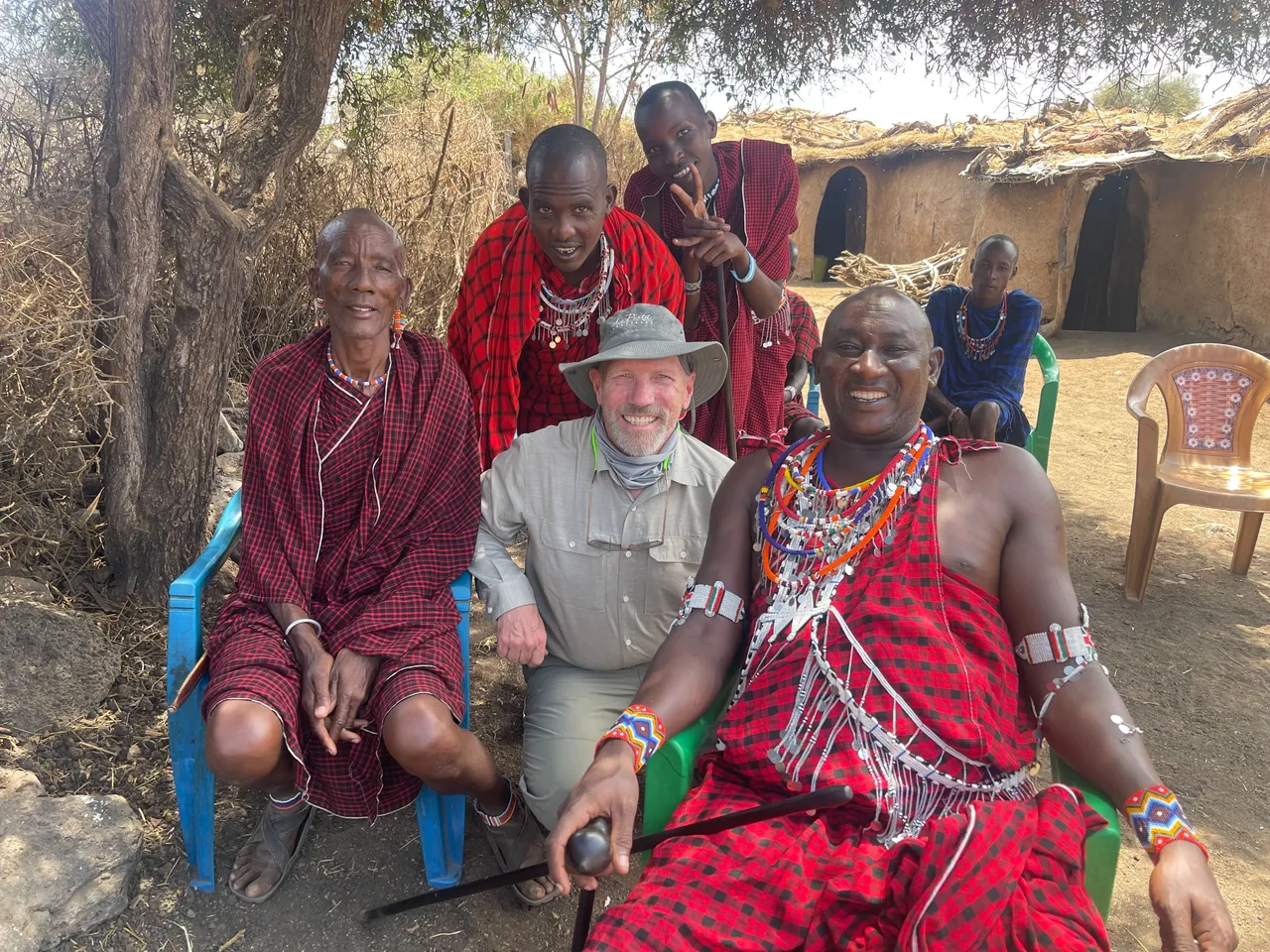
Kevin with Chief Joseph and the boys, after making friends and being welcomed into the village.
Historically, the Maasai were known as fierce warriors and cattle herders. Cattle play a central role in their culture, symbolizing wealth, status, and survival. In the 19th century, the Maasai reached the height of their power, controlling much of the land from central Kenya to northern Tanzania. However, the late 19th century brought challenges to the Maasai, as diseases like rinderpest decimated their cattle, and famine struck their communities. British colonialism further altered their way of life, as colonial governments pushed the Maasai off much of their traditional land to create national parks and establish settler farms, confining them to smaller territories.
Despite these challenges, the Maasai have retained much of their cultural identity, including their language (Maa), traditional dress, and pastoral lifestyle. Today, many Maasai continue to herd cattle, though some have adapted to modern education and employment opportunities while balancing their cultural traditions with the pressures of modernity. Their strong connection to their land and heritage remains a defining aspect of Maasai identity. The group got to experience that today with an intimate tour from Chief Joseph through his village and even his house.
The Maasai are known for their iconic clothing, particularly the bright red shuka (a blanket-like garment). The red color symbolizes bravery and is believed to ward off lions. Maasai men and women also adorn themselves with intricate beadwork, with different colors and patterns representing various aspects of life such as marital status or age.
The Maasai have traditionally lived a semi-nomadic lifestyle, herding cattle across the vast plains of Kenya and northern Tanzania. Cattle are central to their culture and economy, serving as a symbol of wealth and status. Even though many Maasai have adopted more settled lifestyles in modern times, cattle herding remains an essential part of their identity.
The Maasai speak Maa, a Nilotic language, but many also speak Swahili and English due to their proximity to urban areas and increased interaction with tourists. It is pretty amazing that almost everyone speaks three languages, or more here, but it makes conversing and understanding each other very possible. There are so many places in the world, where if you go into a small, rural village and don't speak the language you will never get the same experience as here.
The Maasai are known for their elaborate rites of passage, particularly for young men. One of the most famous is the Enkipaata ceremony, which marks the initiation of boys into manhood. Traditional warriors, known as morans, undergo extensive training and initiation rituals that prepare them for roles as protectors of the community. Historically, boys turning into men would be sent out to hunt and kill a lion. This is one of many traditions that is losing favor among many Maasai.
The Maasai have a profound connection to their land and the wildlife that inhabits it. They live in harmony with the environment, practicing sustainable grazing and avoiding hunting wildlife. This close relationship with nature is reflected in their traditional practices and respect for the animals they share their habitat with, particularly in areas like Amboseli in Kenya. It is pretty wild to see lions on one side of the marsh and a herd of Masai cows being led down to the same waters.
Whenever Amboseli National Park is part of my safari itinerary, I arrange an opportunity to visit a Maasai village just outside the park. It is called Village #3, and Chief Joseph is always there to greet us. Tom seems to be his right hand man, and both took our group under their wing and invited us in. The men and women of the village greeted us with a song, dance, and prayer. We witness warrior jumping rituals, toured inside the chiefs house (which was made of sticks and dung), saw how fire can be made with two sticks and some elephant dung, talked with the medicine man, and had a wonderful encounter with the young kids who took a break from taking their exams to come sing and show off their scholastic skills.
All through the experience, our group peppered Chief Joseph and the other with questions about their culture, modernization, schooling, marriage, and more. We learned Chief Joseph has two wives, and Joseph Jr goes to university in Nairobi. The oldest woman in the village is 98 years old, and the Maasai can cross the border with Tanzania freely. One of the funniest moments of the visit came when the kids were setting up, and from behind us a small woman of the village walked up with a huge bundle of wood on her head, and dropped it on the ground with a pretty heavy sounding thud. Janet then attempted to pick it up to see how heavy it was... too heavy. Although Patty certainly turned some heads when she lifted it high off the ground. I was afraid she was going to end up as Chief Joseph's third wife after putting on that show.
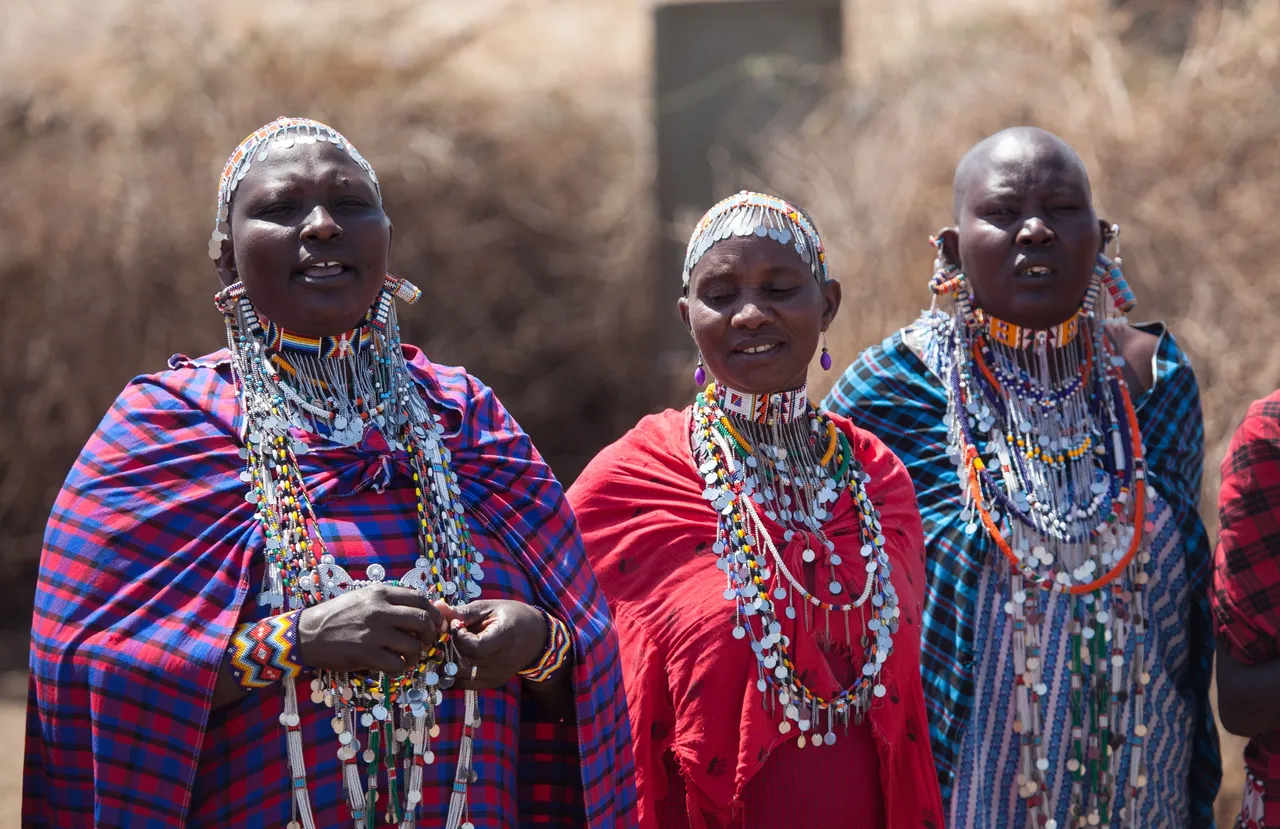
Three Maasai women absolutely sparkling.

Portrait of a Maasai.
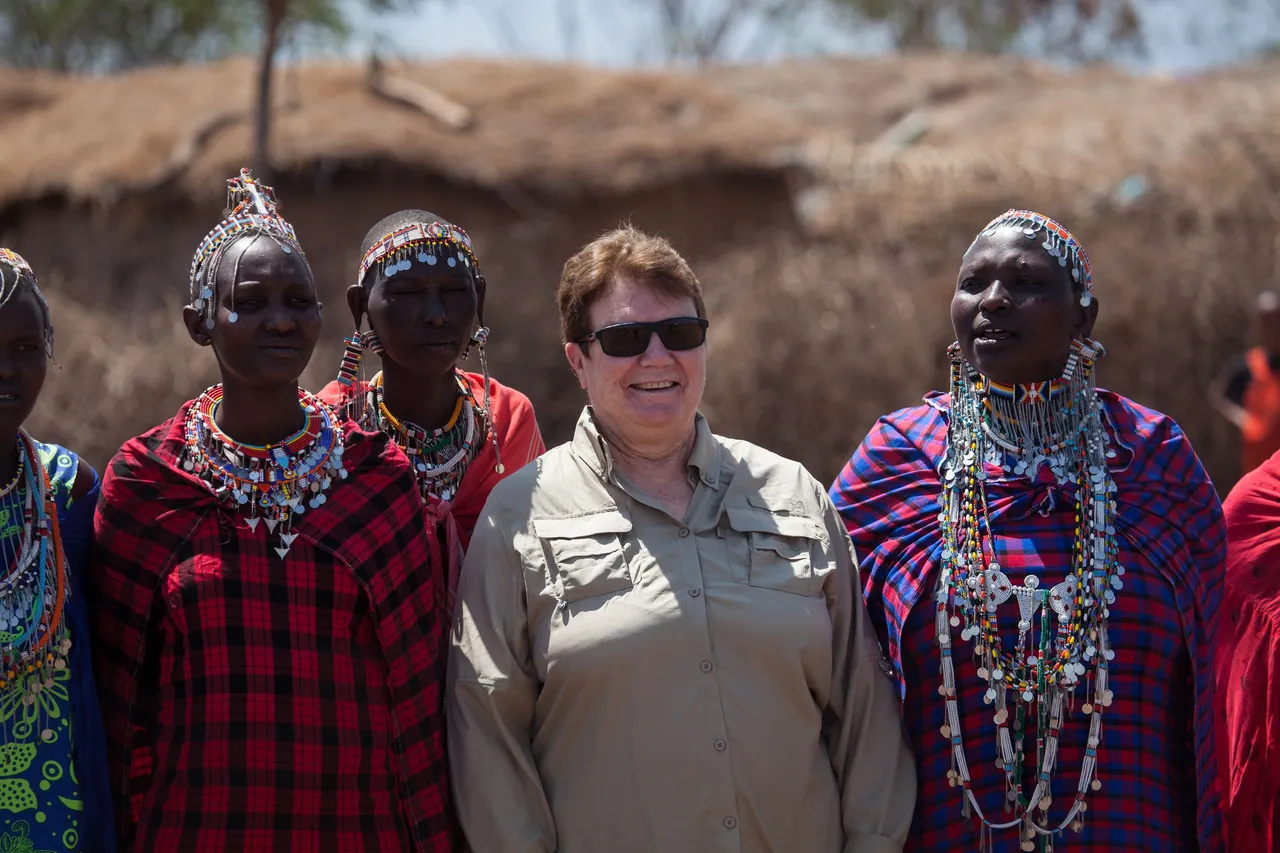
Patty and the girls.
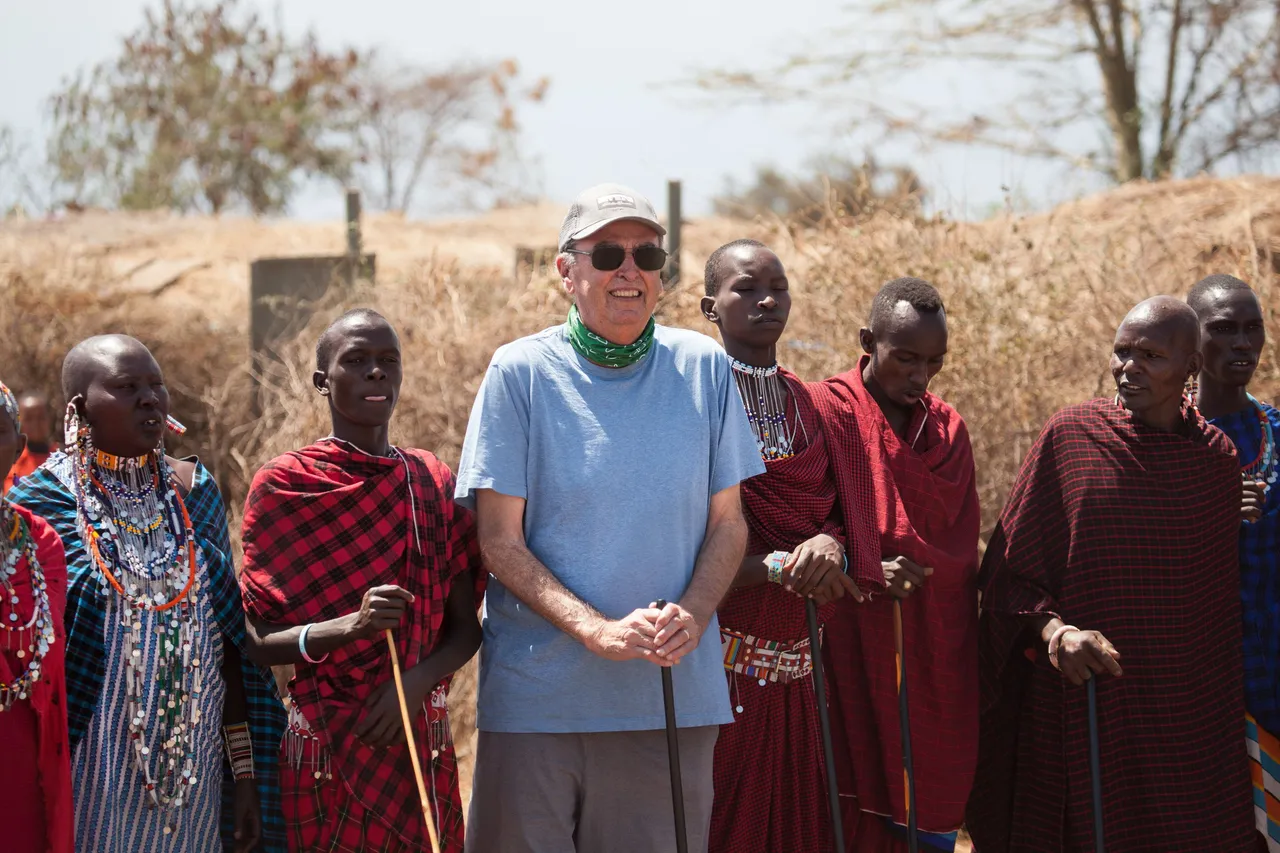
Terry put up a good challenge as best dancer in the group.
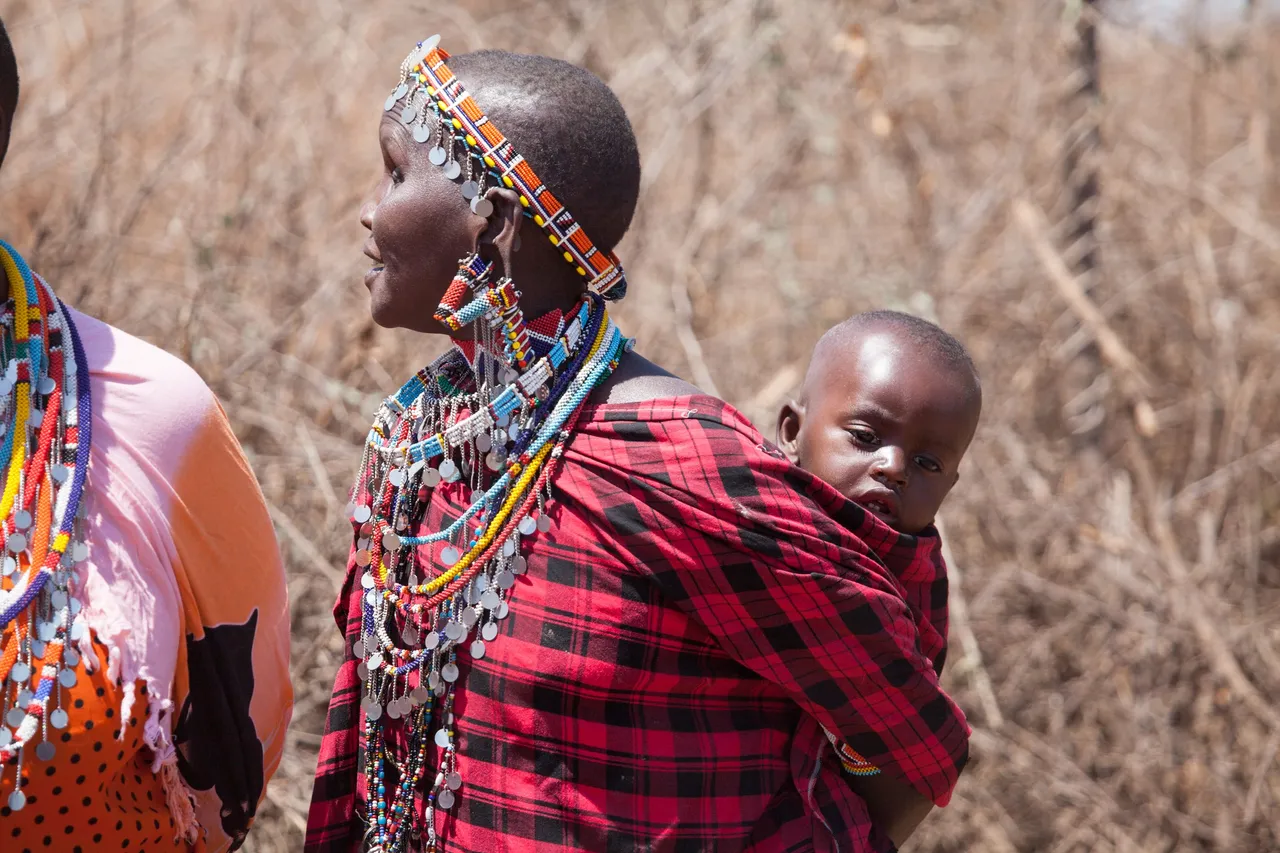
All you need is a wrap. This is the extent of baby carriers around these parts of Africa.
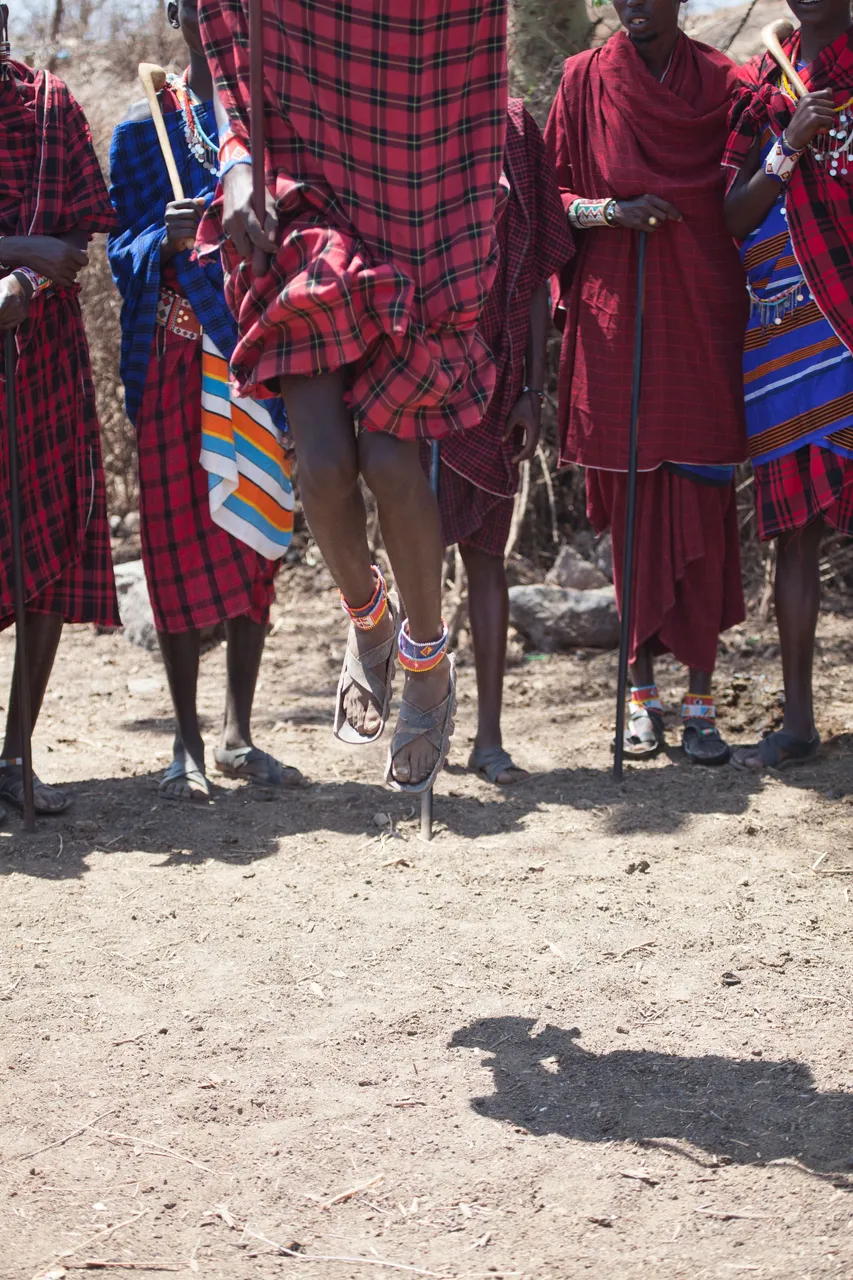
The effortless leaping of Maasai warriors.
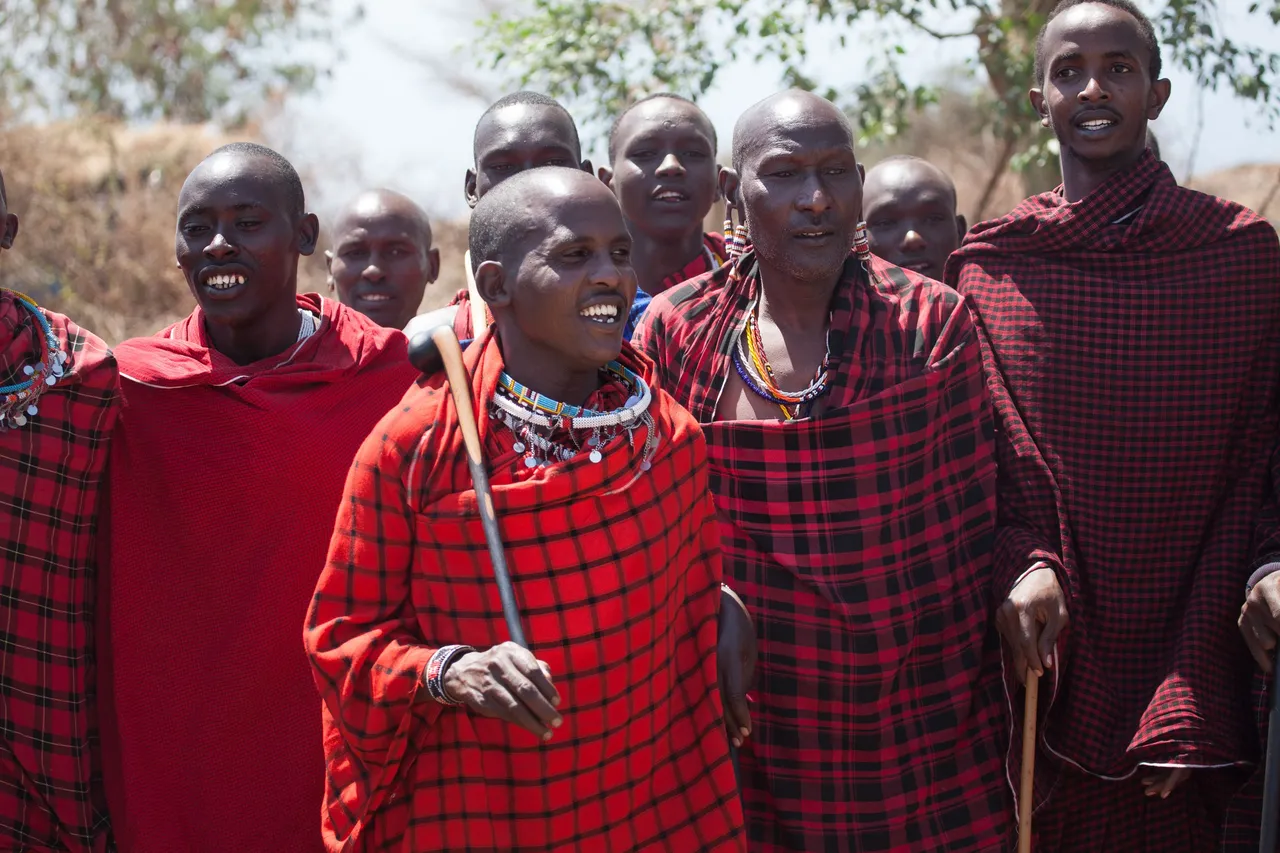
You could tell Tom and the guys were really getting into the dancing.
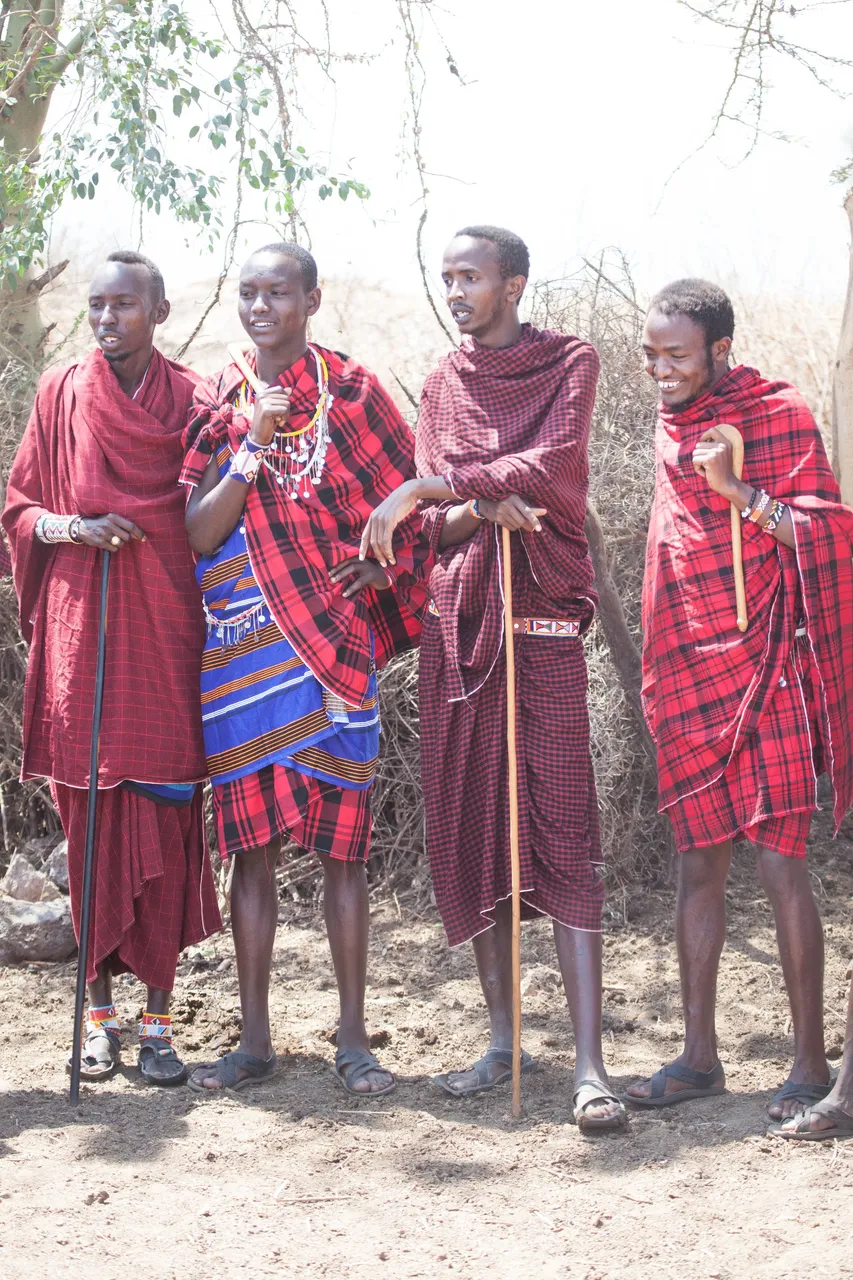
I like this moment caught in time. I wonder what they are all thinking.
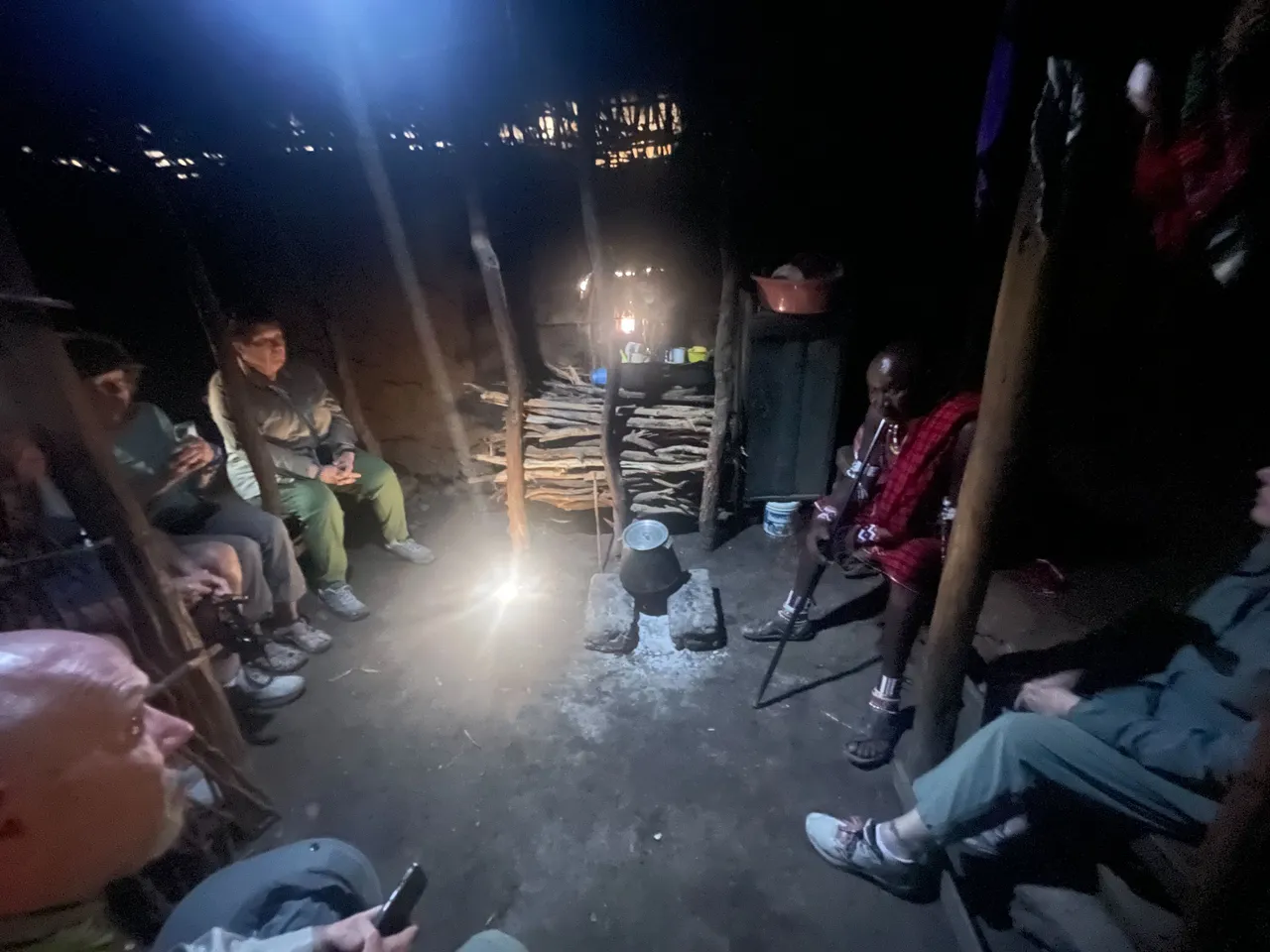
Once our eyes adjusted we could see pretty well inside the Chief's hut, despite the dimness. It was quite cozy inside. Although no one took Joseph up on his offer to spend the night here instead of the lodge.
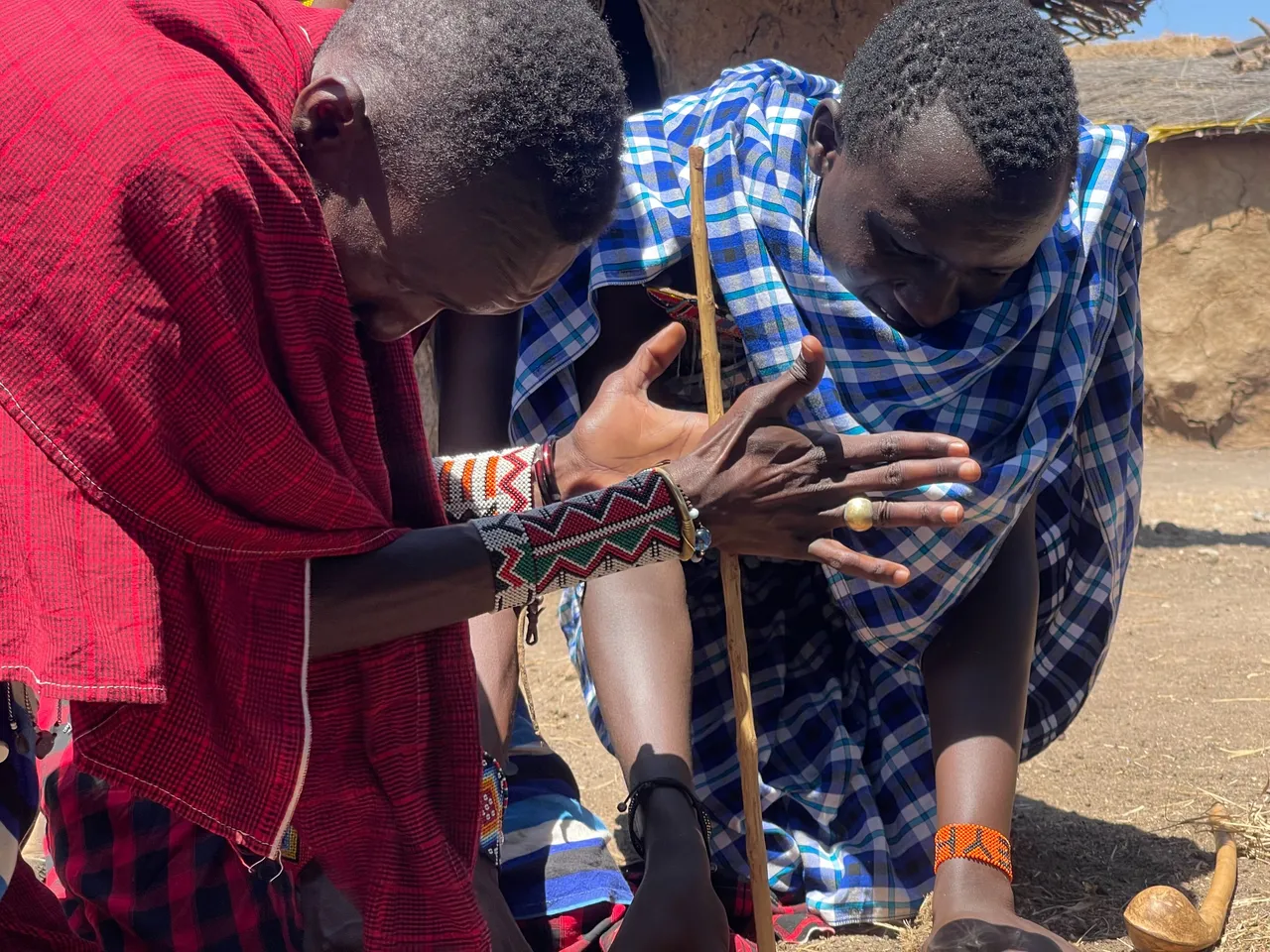
It is no small feat to create fire from the friction of two sticks. These guys did it in just a couple of minutes. They were definitely sweating at the end.

Almost there!
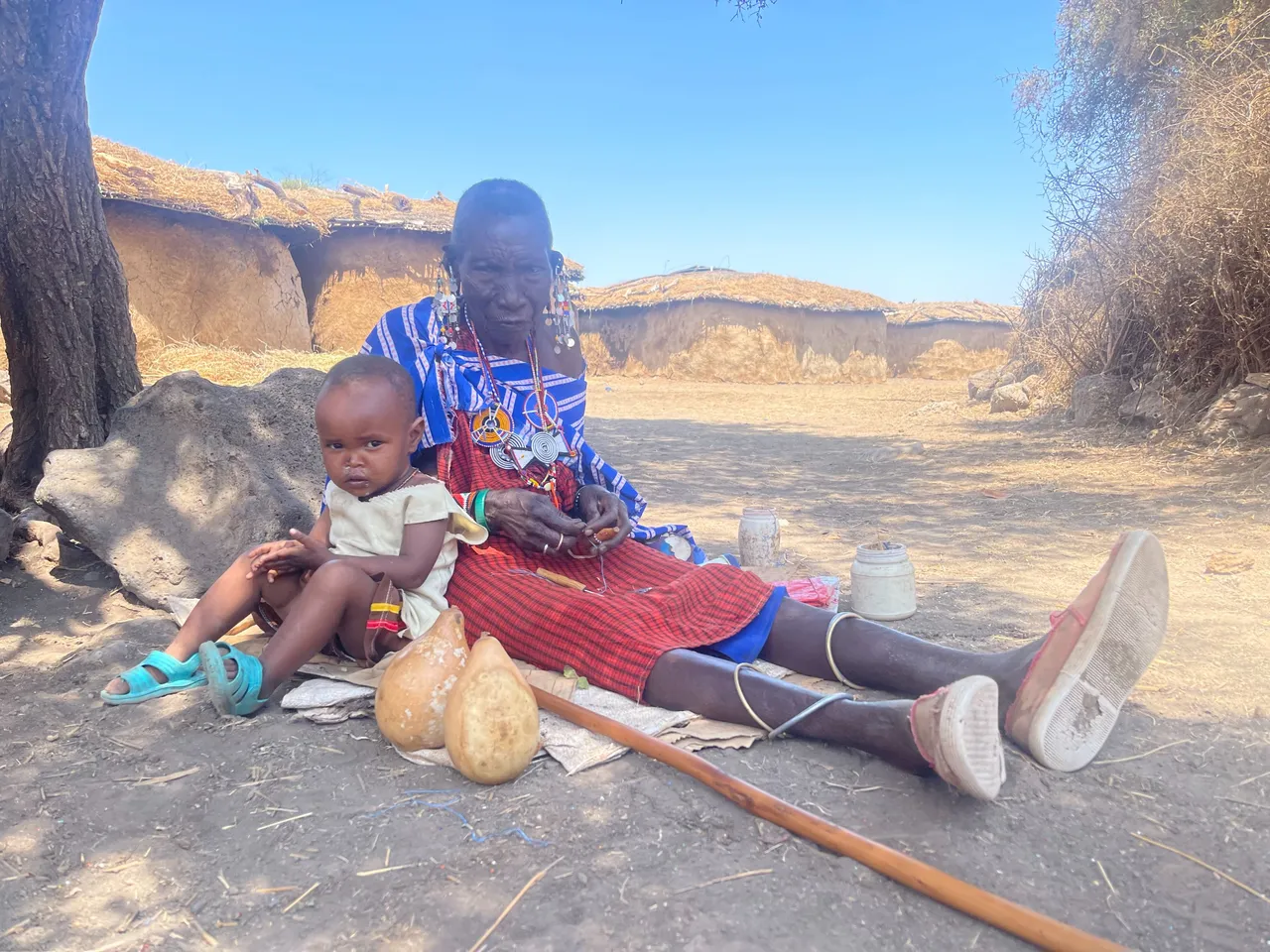
98 years old with 2 years young. Life in the village.
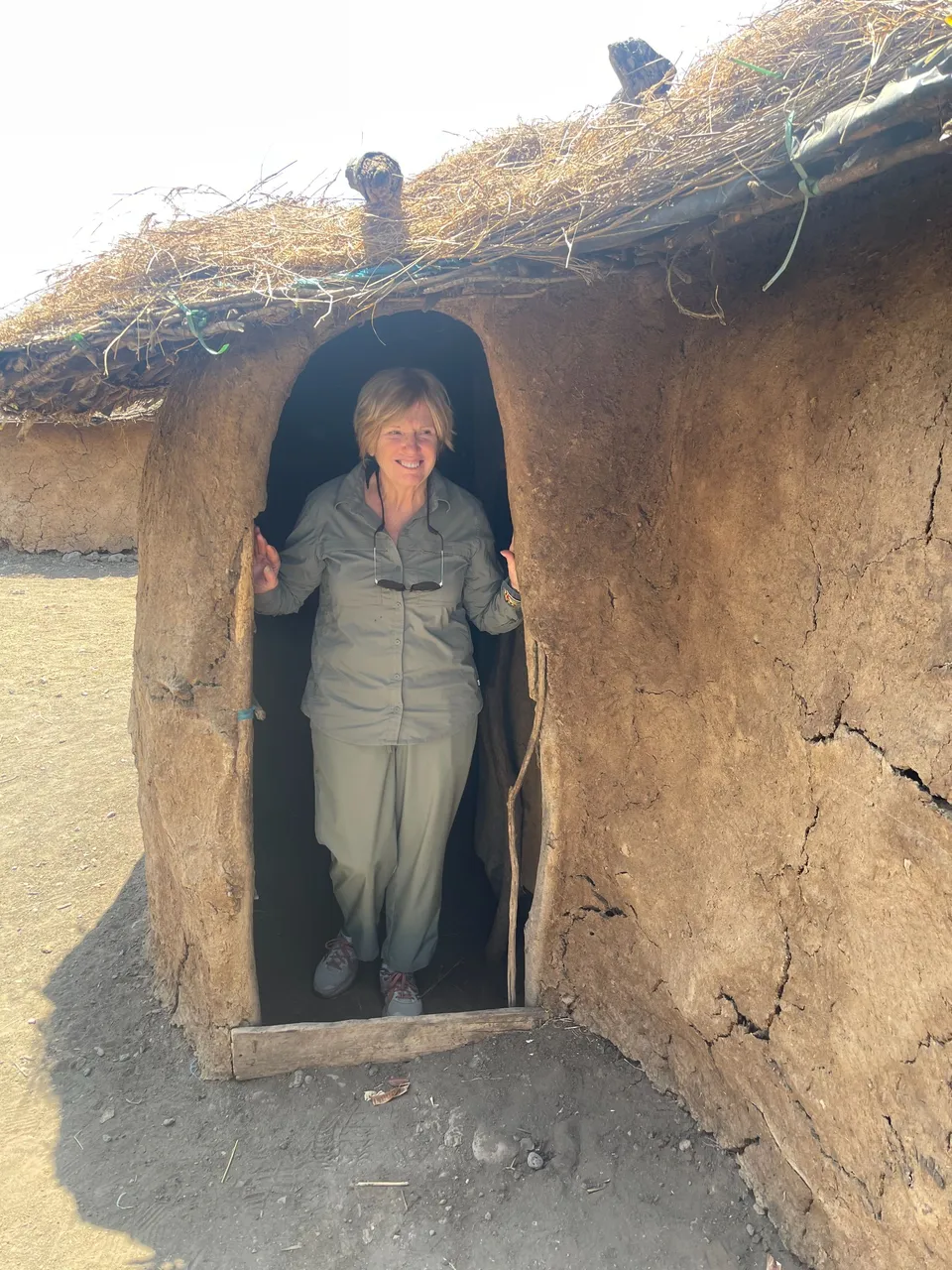
Janet exiting the Chief's house made of dung.
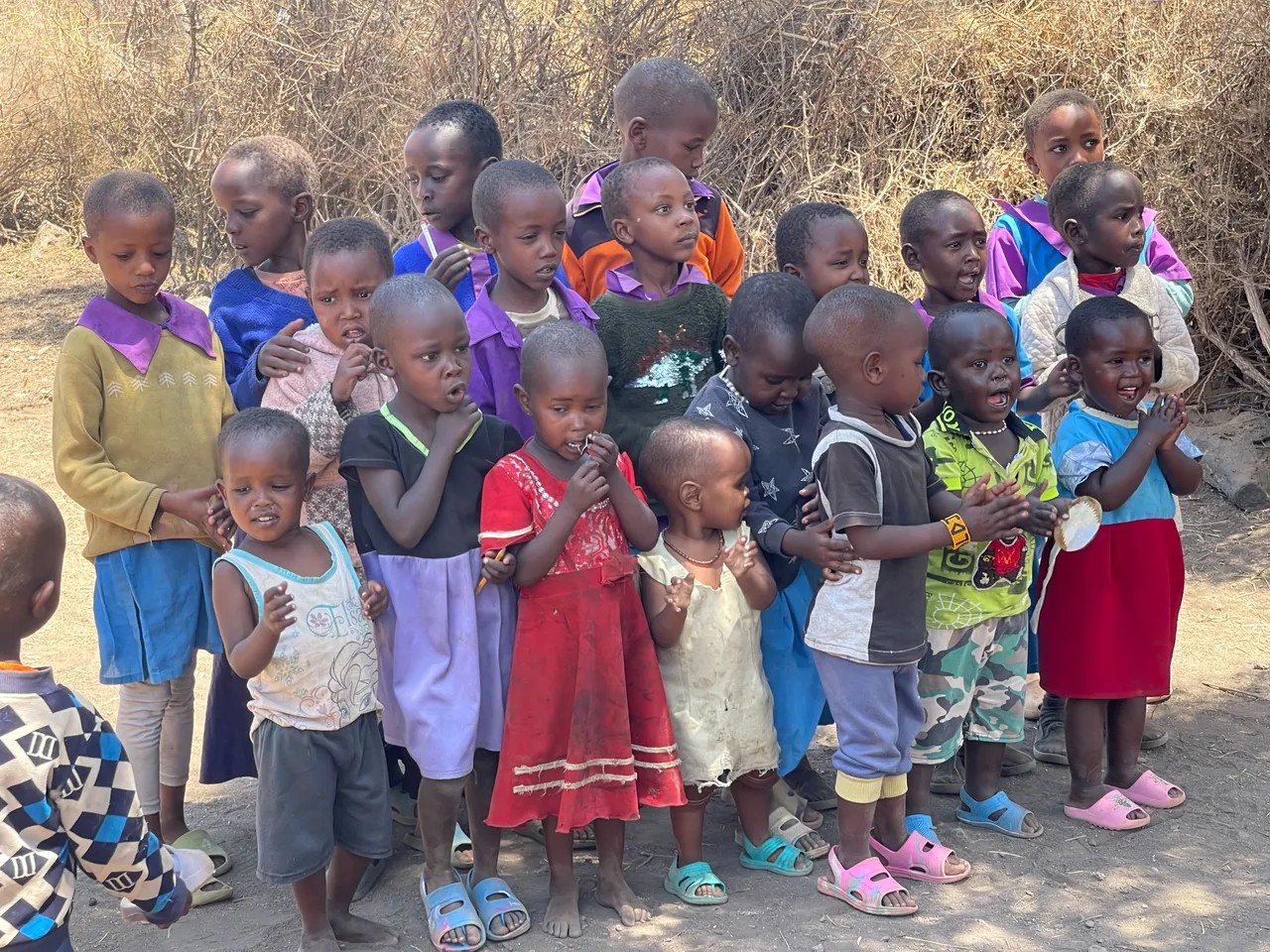
The kids are just ridiculously cute. The got to put on a performance for us with songs, ABC's, counting, and math problems.
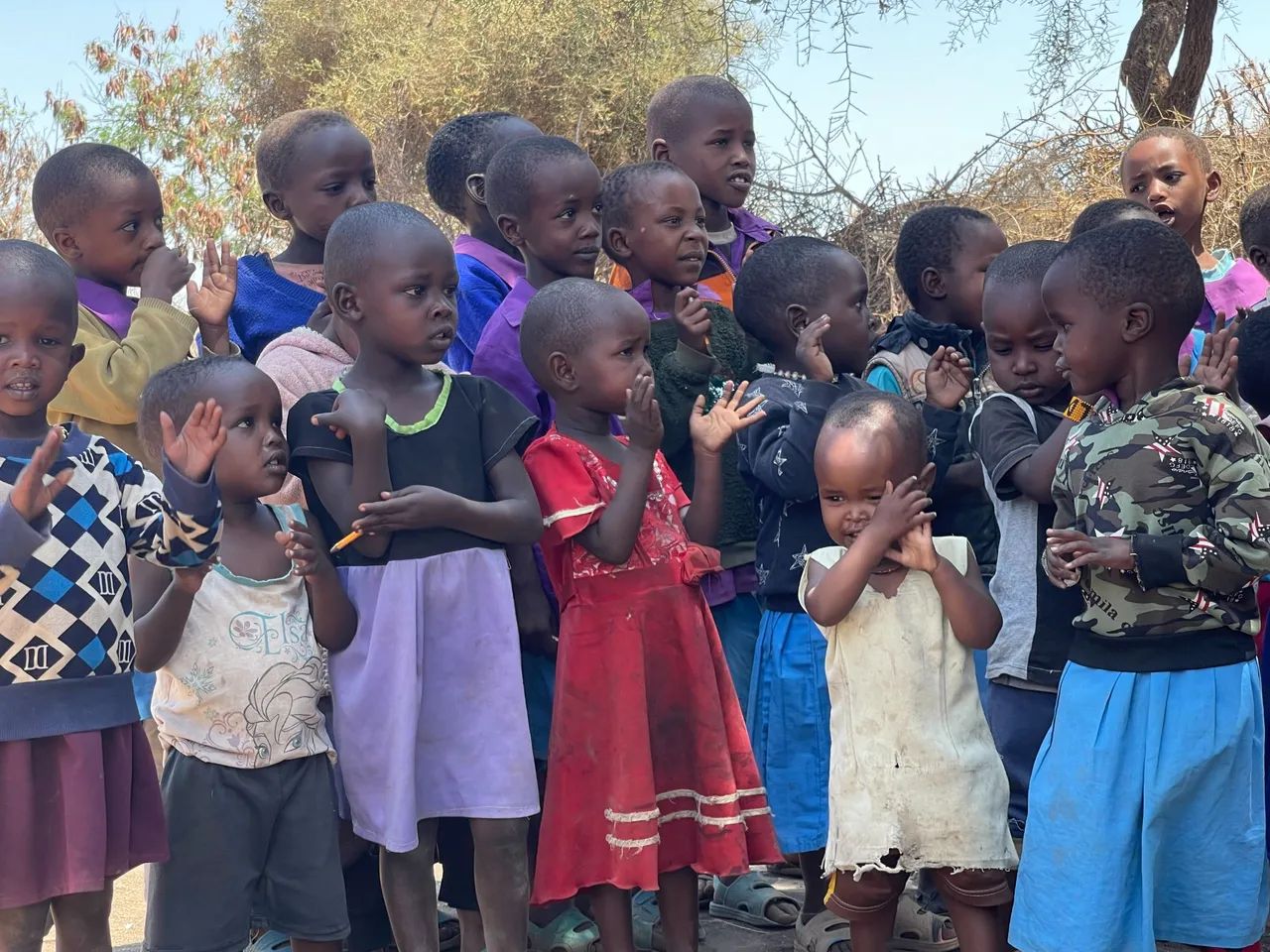
Even the little two year old from above got up and joined in the fun.
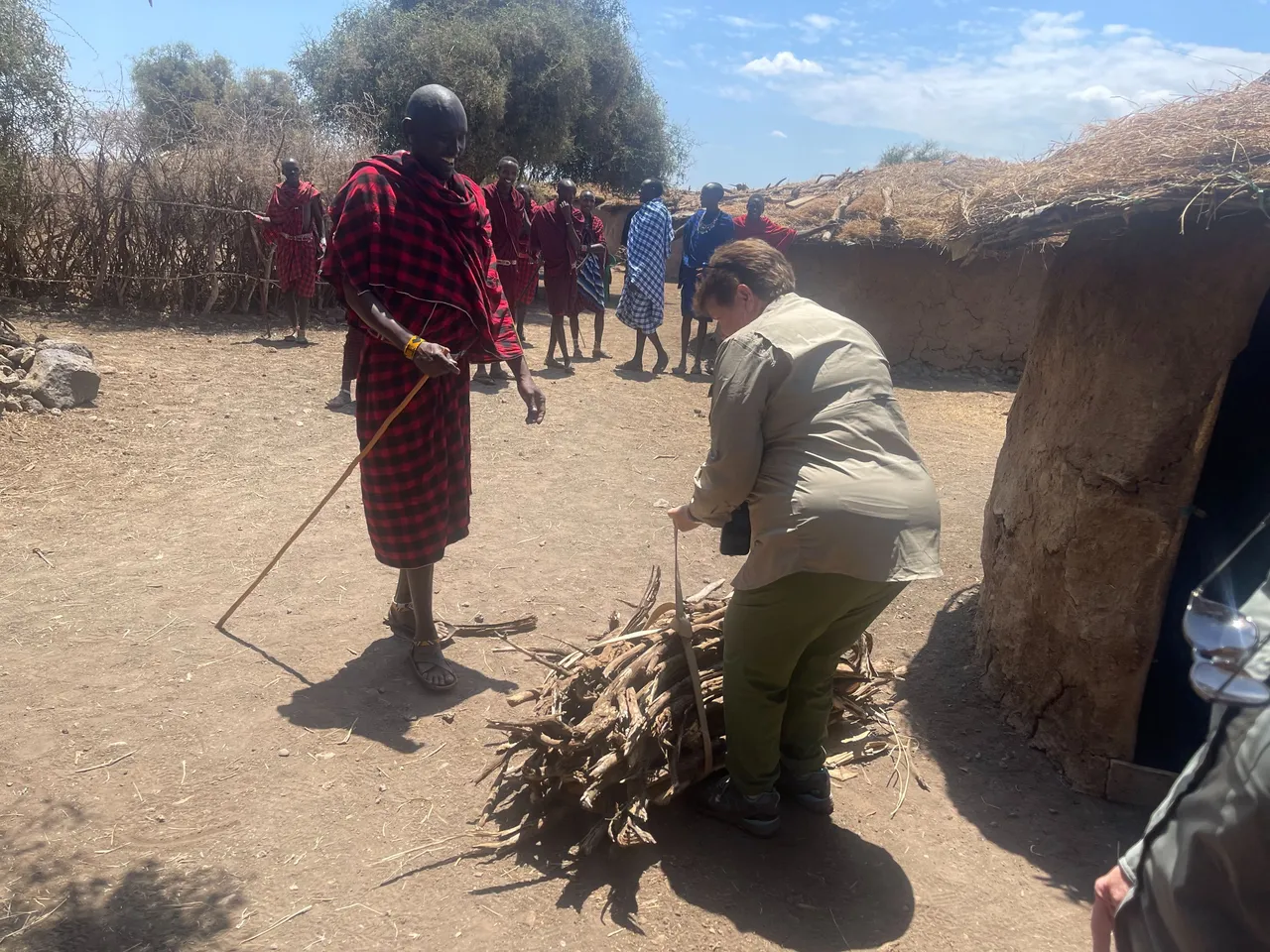
Patty, showing them how its done!

Me and Tom.
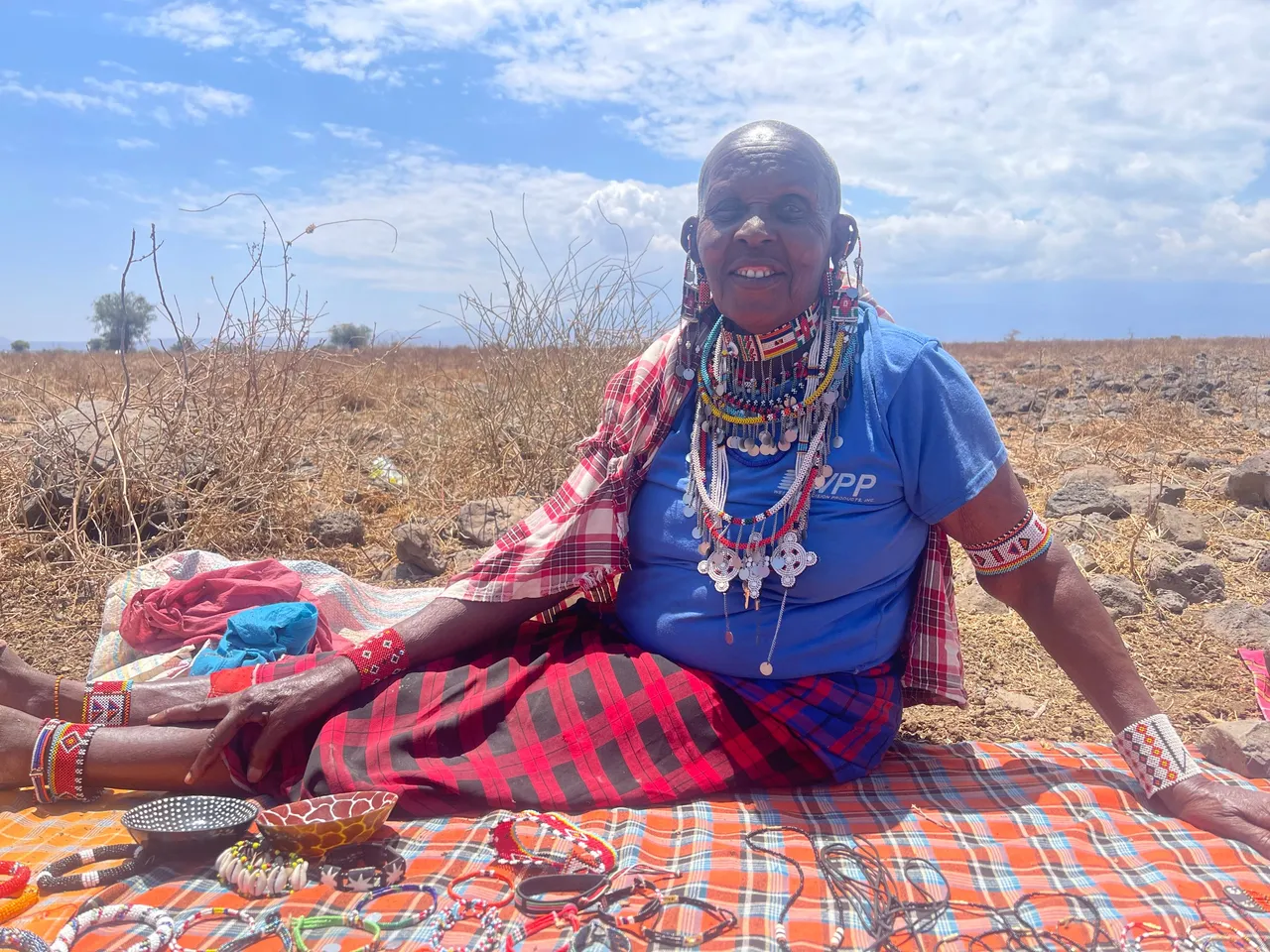
Tom's mother, showing off some of the beadwork she has for sale.
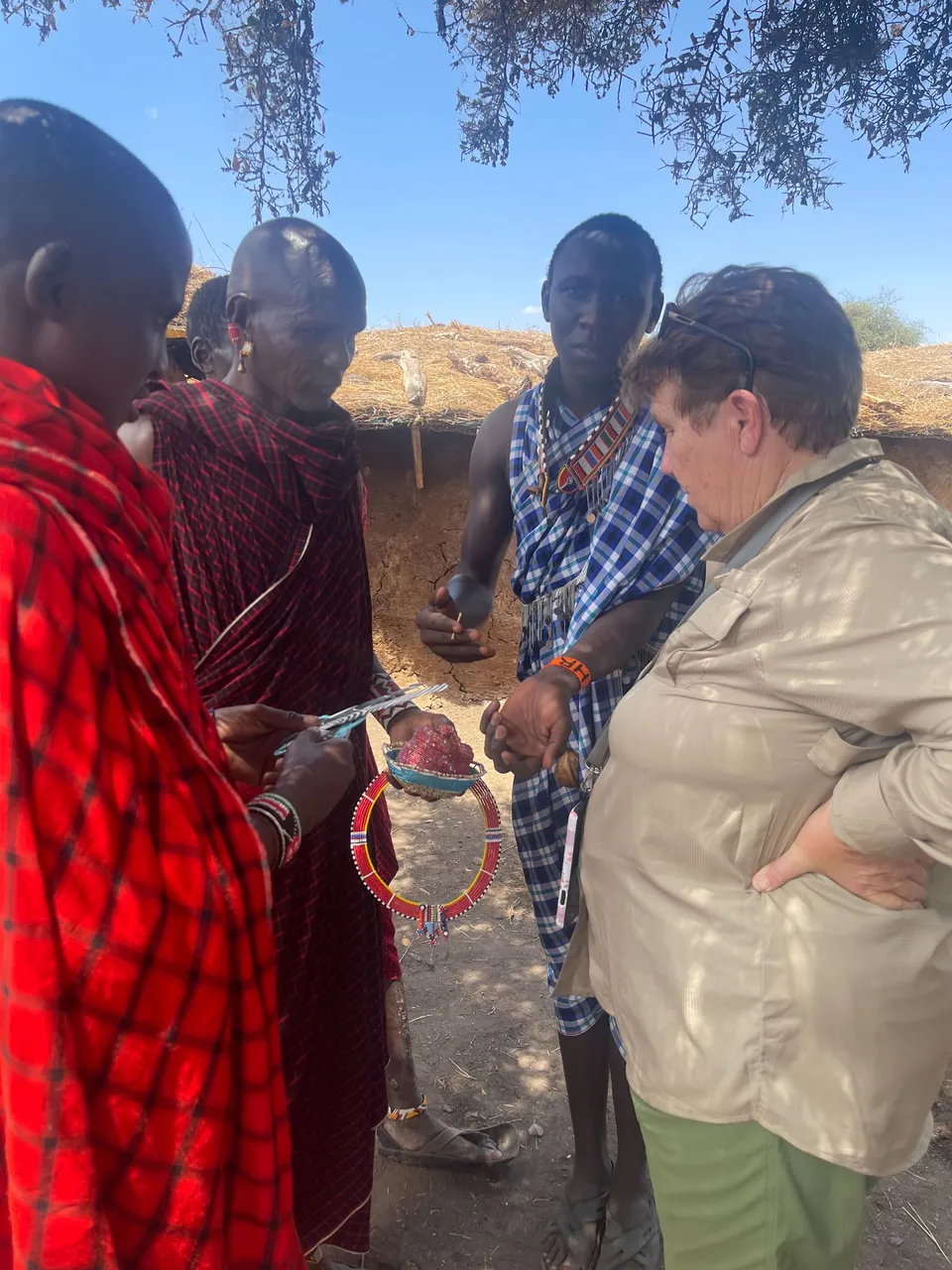
After lifting the heavy bundle of wood, the Maasai warriors were quite nervous to haggle with Patty.
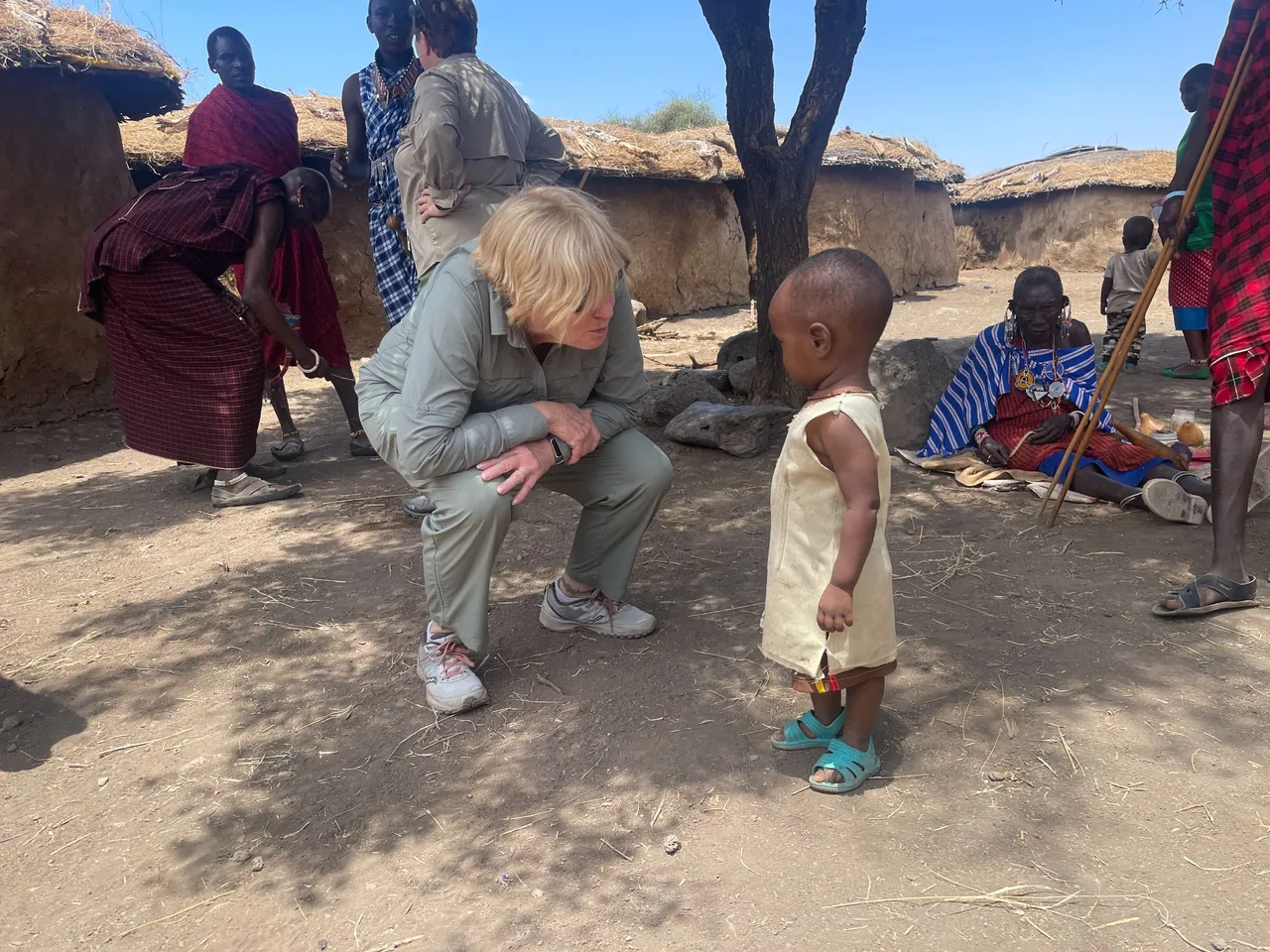
Kids love it when you get on their level.
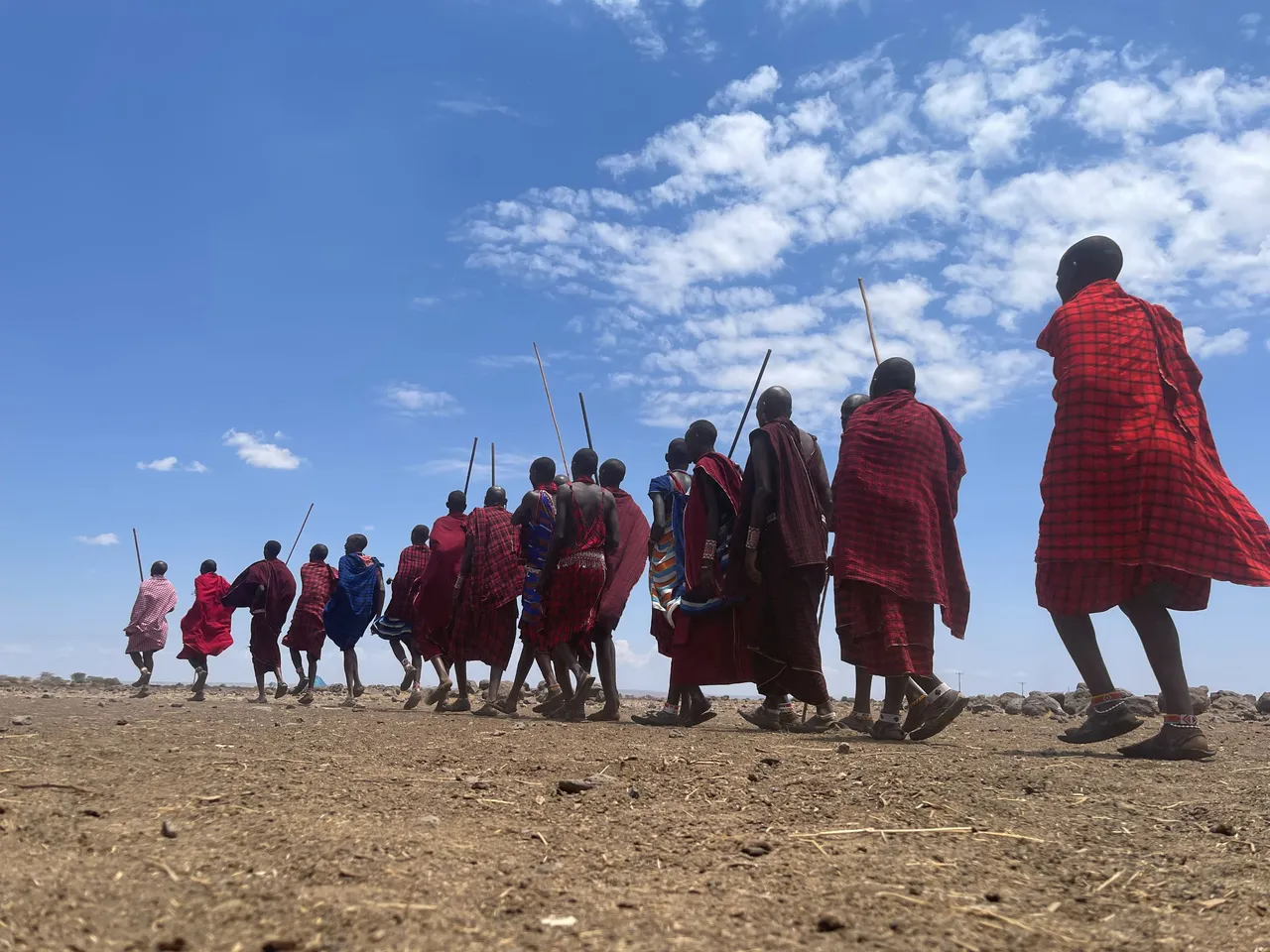
A line of Maasai warriors.

Not bad air time there.
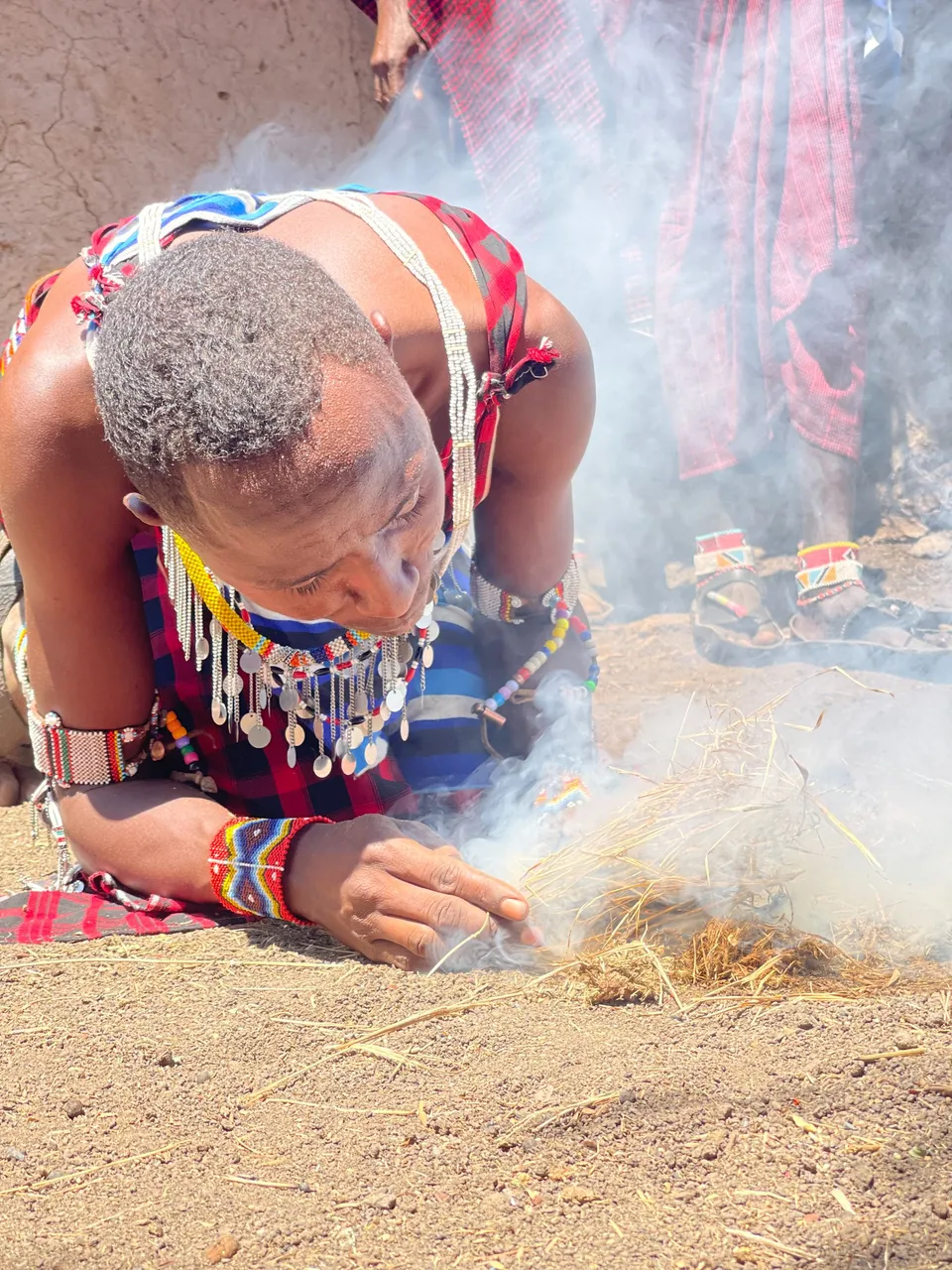
We've got a spark!
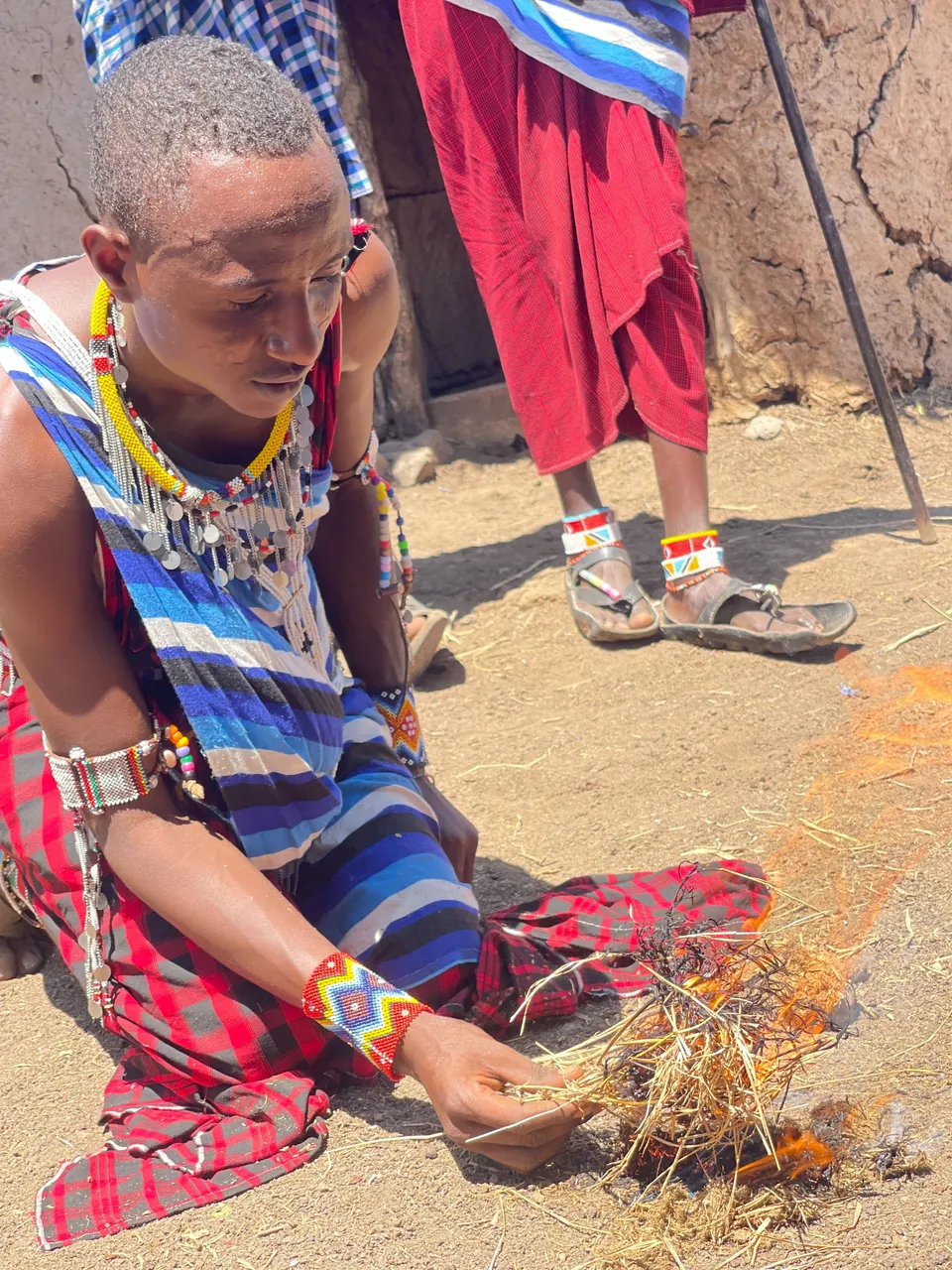
Flame on!
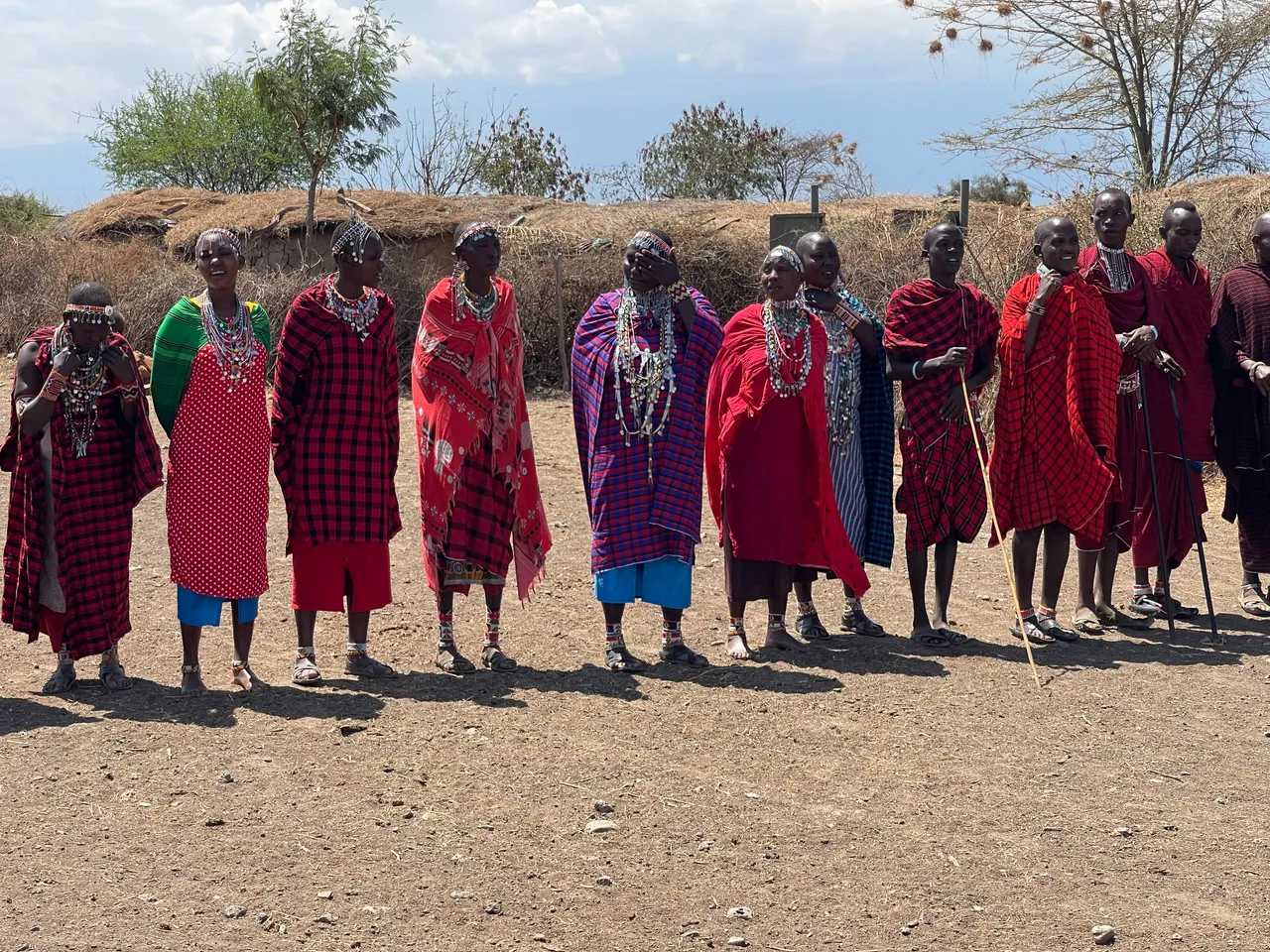
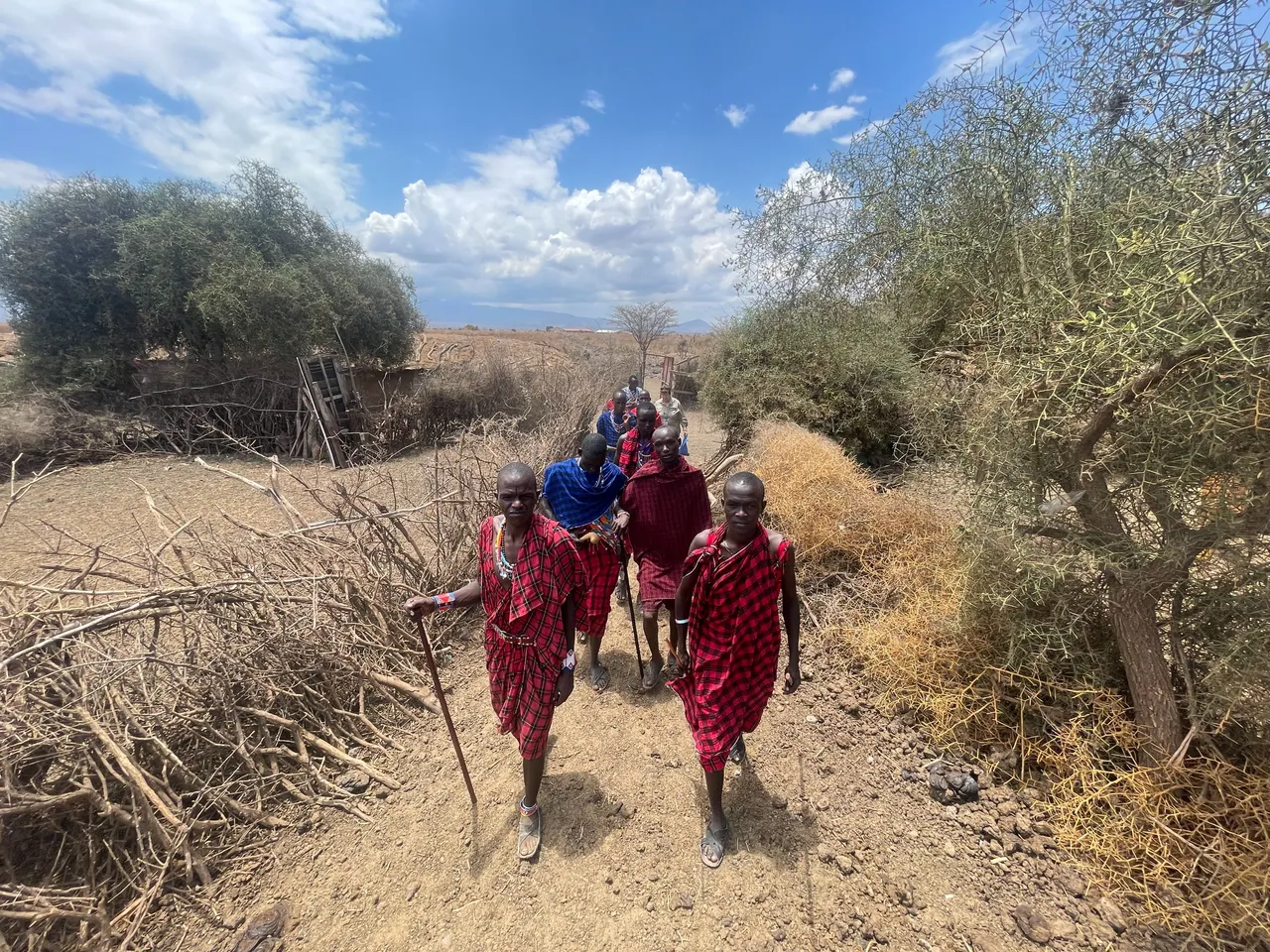
Into the inner circle of the village. This is the most protected area and is reserved for the cows and goats at night.
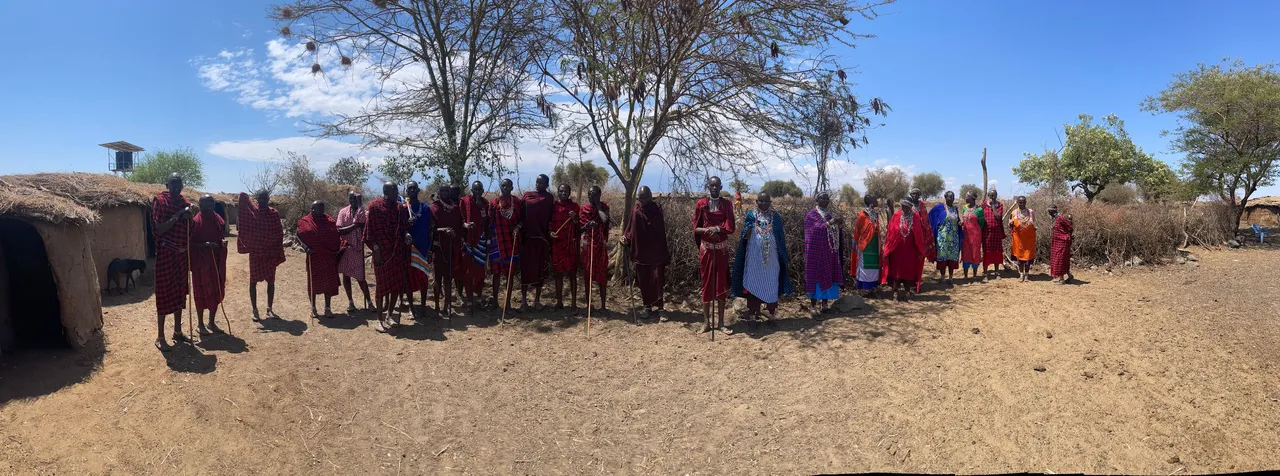
The village greeting.
Another magical experience here on our African safari.
I hope you enjoy following along, and as always... keep traveling!
- Dai Mar
[//]:# ([//]:# (!worldmappin -2.71342 lat 37.25432 long Masai Village 3 d3scr))